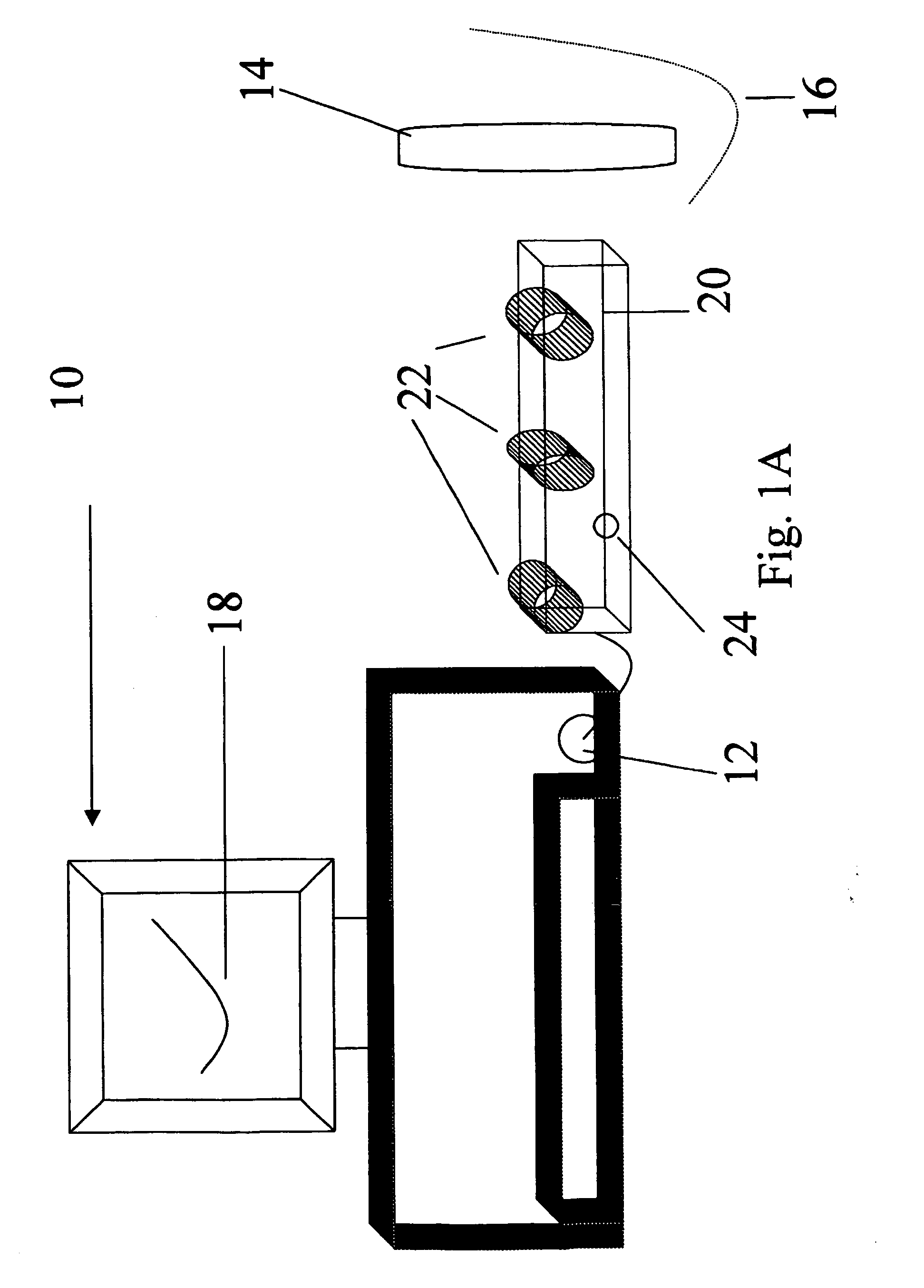Method and system for obtaining positioning data
- Summary
- Abstract
- Description
- Claims
- Application Information
AI Technical Summary
Benefits of technology
Problems solved by technology
Method used
Image
Examples
Embodiment Construction
[0186] The present embodiments disclose a system for determining the location of a positional element using continuous wave ultrasound signals and / or using detectors with multiple receivers, whose inputs are multiplexed and entered at a convenient analog input of the computing device with which it is desired to interact. The computing device uses its own resources to demultiplex the signals and determine the location of the pointing device. In an embodiment the signal is a synchronized combination of an ultrasonic and an infrared signal.
[0187] In a further embodiment the detectors may be a standalone device able to process the continuous wave output independently.
[0188] Another aspect of the presently disclosed embodiments concerns the ability to carry out position detection using low processing power to decode the signals.
[0189] The principles and operation of a pointing device and system according to the present invention may be better understood with reference to the drawings ...
PUM
 Login to View More
Login to View More Abstract
Description
Claims
Application Information
 Login to View More
Login to View More - R&D
- Intellectual Property
- Life Sciences
- Materials
- Tech Scout
- Unparalleled Data Quality
- Higher Quality Content
- 60% Fewer Hallucinations
Browse by: Latest US Patents, China's latest patents, Technical Efficacy Thesaurus, Application Domain, Technology Topic, Popular Technical Reports.
© 2025 PatSnap. All rights reserved.Legal|Privacy policy|Modern Slavery Act Transparency Statement|Sitemap|About US| Contact US: help@patsnap.com



